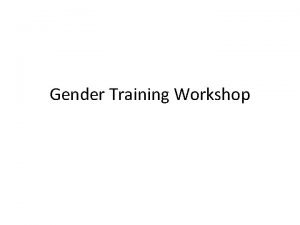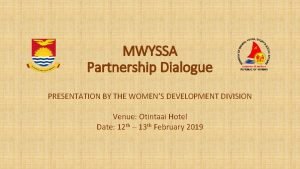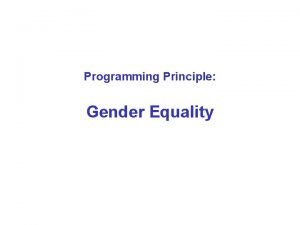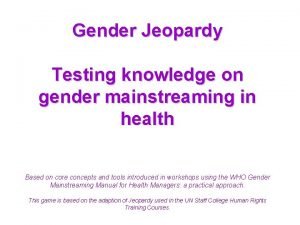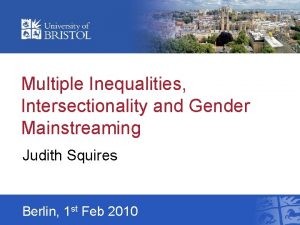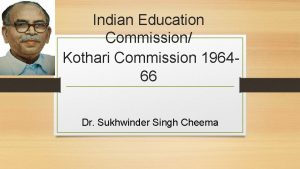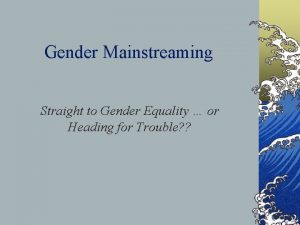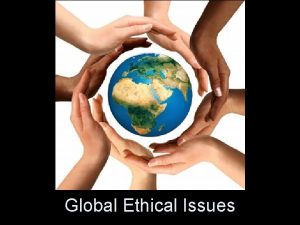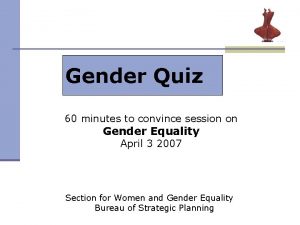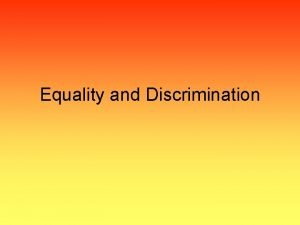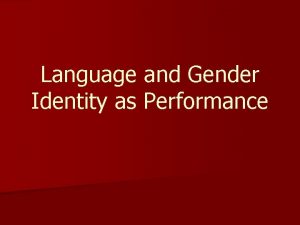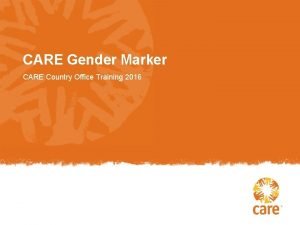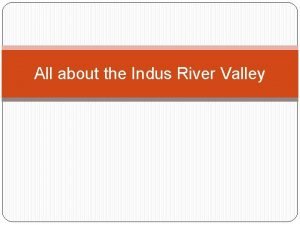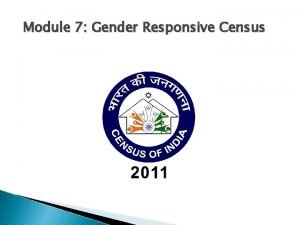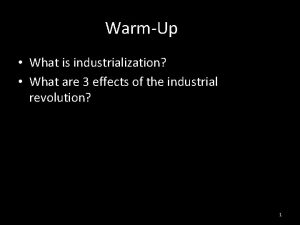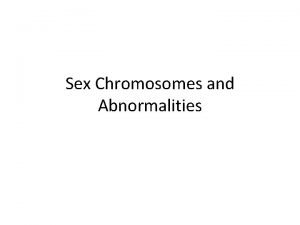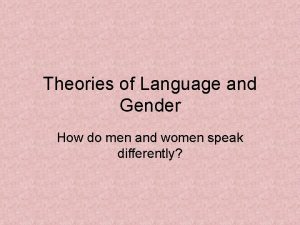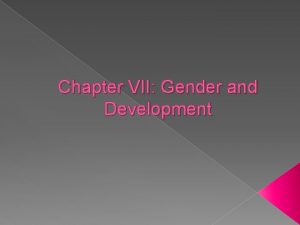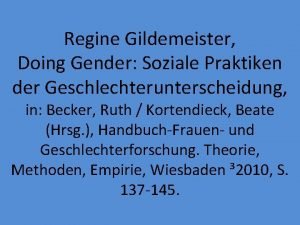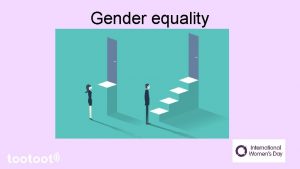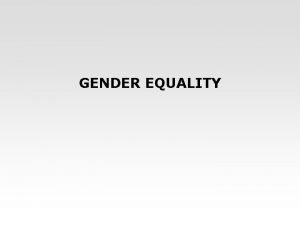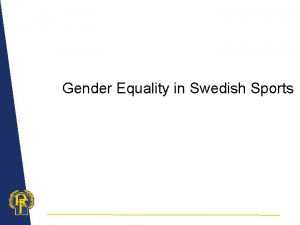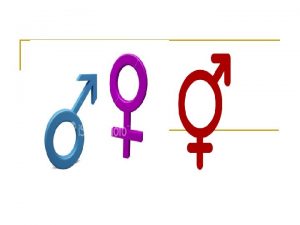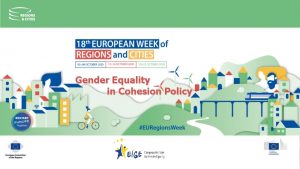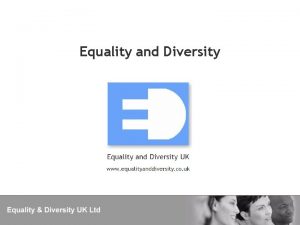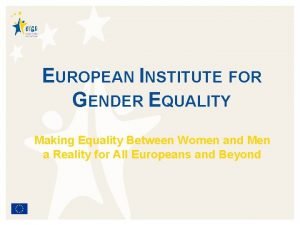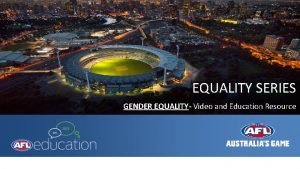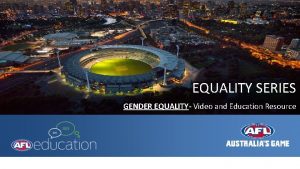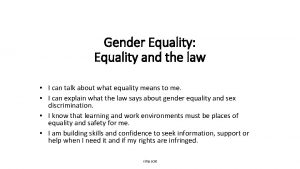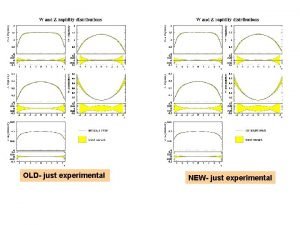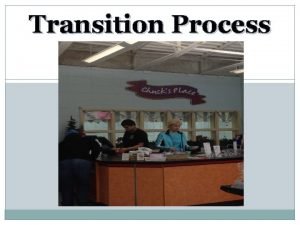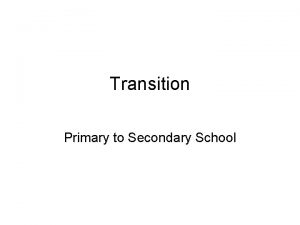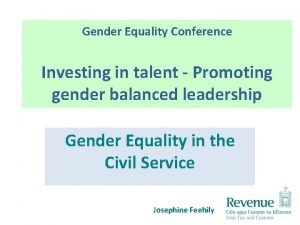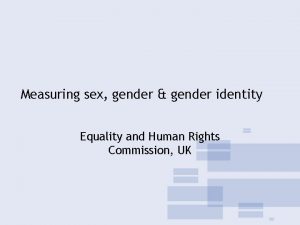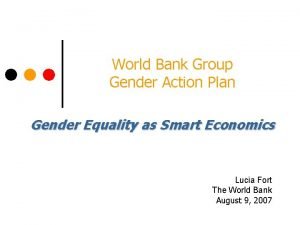Gender Equality in Just Transition GENDER EQUALITY 1

























- Slides: 25

Gender Equality in Just Transition GENDER EQUALITY 1

GENDER EQUALITY 2

Our AGENDA • Text – Text 3

Our OBJECTIVES • Understand the concepts of: gender vs. sex; gender roles; gender equality; gender mainstreaming. INTRODUCTION CURRENT MODEL • Critically analyze the current gender model from the social, economic and environmental point of view; STRATEGIES FOR JUST TRANSITION FOR WOMEN • Deepen the gender implications of the transition in terms of 1) green and decent jobs; 2) social protection; 3) participation. • Formulate concrete policies to promote women's empowerment CONCLUSION through the transition (also as potential part of your final Action Plan). 4

AGENDA: STEP 1 • Text – Text 5

SEX / GENDER SEX: BIOLOGICAL DIFFERENCE between male and female on the basis of their reproductive functions / GENDER: SOCIAL AND CULTURAL DIFFERENCES attributed to male and female 6

GENDER ROLES PUBLIC SPHERE PRODUCTIVE WORK RECOGNIZED and REMUNERATED ACCESS to OPPORTUNITIES and CAPITAL PRIVATE SPHERE REPRODUCTIVE WORK NOT RECOGNIZED and NOT REMUNERATED less ACCESS to OPPORTUNITIES and CAPITAL SELF-DETERMINATION/ DEPENDENCE/POVERTY/ SOCIAL INCLUSION SOCIAL EXCLUSION/ 7

GENDER EQUALITY FORMAL EQUALITY: assuring that women and men have the SAME STARTING POINT IN SOCIETY / SUBSTANTIAL EQUALITY: assuring that women and men have the RUN THE SAME DISTANCE to achieve social inclusion and opportunities 8

GENDER MAINSTREAMING 9

Gender Mainstreaming in JUST TRANSITION? 1. WHERE ARE WOMEN AND MEN? 2. WHERE CAN WOMEN AND MEN BE? 10

AGENDA: STEP 2 1. WHERE ARE WOMEN AND MEN? 11

Is the current model GENDER-EQUAL? 12

A) SOCIALLY: think of SOCIAL PROTECTION SELF-DETERMINATION/ Lower SOCIAL INCLUSION maternity protection DEPENDENCE/POVERTY/ SOCIAL EXCLUSION Lower protection of occupational safety and health Lower access to essential services (health, education, housing, water…) LOWER SOCIAL PROTECTION COVERAGE (both at the level of Social ( Protection Floor and at the level of contributive system) Lower unemployment Lower benefits pensions Lower income security 13

B) ECONOMICALLY: think of EMPLOYMENT Lower contribution to Social Protection PRODUCTIVE WORK REPRODUCTIVE WORK Less and worse green jobs opportunities SEXUAL DIVISION OF WORK Lower carrier Lower opportunities Employment EMPLOYMENT Rate Double DISCRIMINATION burden Higher unemployment rate Gender Pay-Gap Labour Segregation 14

ENVIRONMENTALLY: think of CLIMATE CHANGE Employment higher vulnerability (i. e. agriculture) ACCESS to OPPORTUNITIES and CAPITAL Higher dependence on natural resources Lower Social Protection less ACCESS to OPPORTUNITIES and CAPITAL high participation of women in agriculture in many developing countries Lower resistance to economic and environmental distress. Less access to land, credit, agricultural inputs, decision-making bodies, technology and training services HIGHER VULNERABILITY facing CLIMATE CHANGE Role in nature resource management at risk More severe impact on their livelihoods 15

Is the current model GENDER-EQUAL? 16

AGENDA: STEP 3 2. WHERE CAN WOMEN AND MEN BE? • Text – Text 17

MAKING TRANSITION “JUST” FOR WOMEN: 3 STRATEGIES GREEN AND DECENT JOBS SOCIAL PROTECTION PARTICIPATION 18

Primary Sector: 2% in developed countries (large scale mechanized agriculture) to 60% in some African and Asian Countries BUT mainly informal and marginalized) -Secondary Sector: where the majority of green jobs are expected to be created (construction, manufacturing, energy). Women are estimated to have less than 25% of world manufacturing jobs (mass production lines/EPZ) -Tertiary Sector: more than 50% of the women are providing services in social and administrative work (while men in business, finance, engineering) 19

EMPLOYED ORGANIZED PAID EQUITABLIY RECRUITED TRAINED 20

VERTICAL EXTENSION BENEFITS FORESEEN BY ILO C. 102 WORKFAMILY CONCILIATI ON POLICIES ACCESS TO ESSENTIAL SERVICES SOCIAL TRANSFERS for INCOME SECURITY HORIZONTAL EXTENSION 21

WOMEN’S PARTICIPATION IN DECISION-MAKING PROCESSES • Promote women’s membership in workers’ and employers’ organizations and coverage by collective agreement, in particular in new green sectors; • Increase public participation of under-represented groups (such as indigenous women, migrant and rural women workers whose jobs and incomes directly rely on natural resources); • Rio Declaration, principle 10: – Assure access to information concerning the environment that is held by public authorities; – Assure effective access to judicial and administrative proceedings, including redress and remedy. 22

AGENDA: STEP 4 • Text – Text 23

YOUR CONCLUSIONS? USEFUL ? FEASIBLE? CLEAR? And now what? 24

V Comments and suggestions welcomed!! GIULIA MASSOBRIO gmassobrio@gmail. com 25
 Strategic gender needs and practical gender needs
Strategic gender needs and practical gender needs Example of gender equality
Example of gender equality Mwyssa
Mwyssa Methodology of gender inequality
Methodology of gender inequality Slogan about gender equality
Slogan about gender equality Rhetorical questions about gender equality
Rhetorical questions about gender equality Recommendations of kothari commission
Recommendations of kothari commission Claudia padovani unipd
Claudia padovani unipd Gender equality definition
Gender equality definition Short poem about gender equality
Short poem about gender equality What is gender equality answer
What is gender equality answer Why does juliet kiss romeo in the tomb
Why does juliet kiss romeo in the tomb Formal and substantive equality
Formal and substantive equality Substantive equality vs formal equality
Substantive equality vs formal equality Gender identity tagalog
Gender identity tagalog Care gender marker
Care gender marker Indus river valley gender roles
Indus river valley gender roles Is there any bias in gender roles based on the excerpt
Is there any bias in gender roles based on the excerpt Gender responsive census
Gender responsive census Quinary sector
Quinary sector Lyon hypothesis
Lyon hypothesis George keith and john shuttleworth
George keith and john shuttleworth Objectives of gender and development
Objectives of gender and development Evaluate schema theory
Evaluate schema theory Doing gender definition
Doing gender definition Gender inequality quiz
Gender inequality quiz

